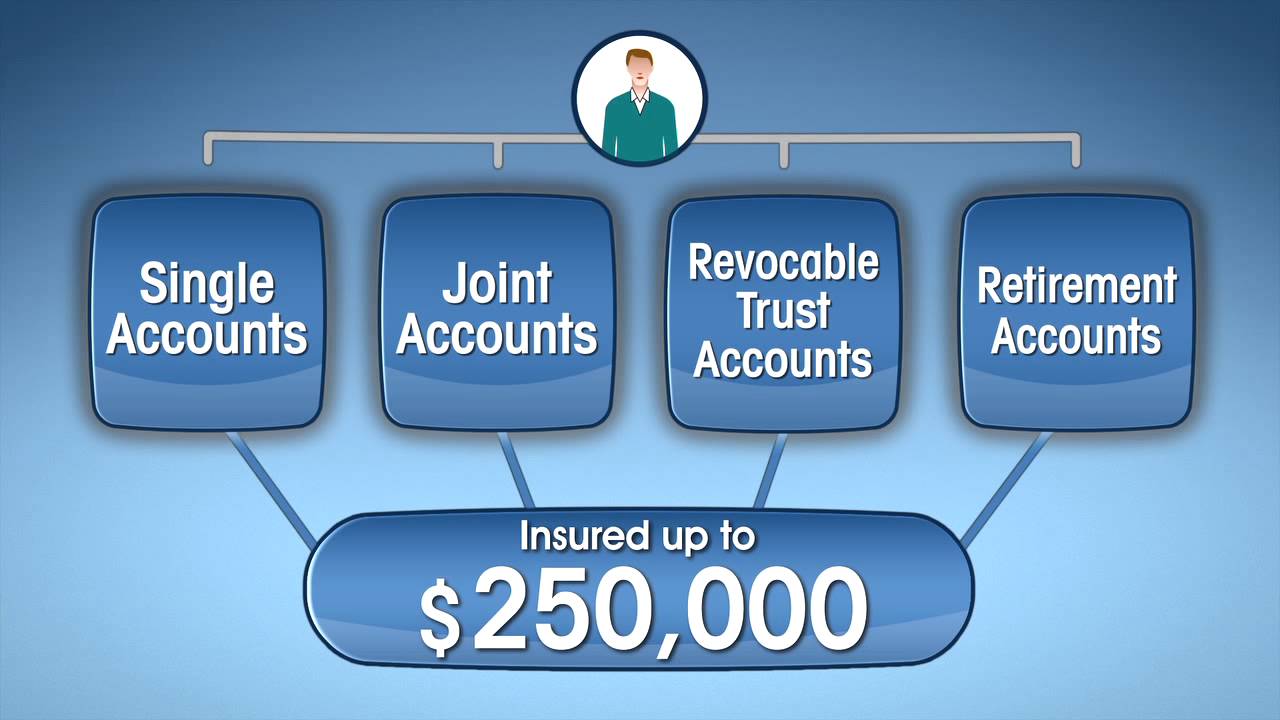Home>Finance>How Much Do Credit Unions Spend On Social Media Marketing


Finance
How Much Do Credit Unions Spend On Social Media Marketing
Modified: January 15, 2024
Discover how credit unions in the finance industry allocate their budgets for social media marketing and the impact of these strategies on their online presence.
(Many of the links in this article redirect to a specific reviewed product. Your purchase of these products through affiliate links helps to generate commission for LiveWell, at no extra cost. Learn more)
Table of Contents
- Introduction
- Overview of Credit Unions’ Social Media Marketing Expenditure
- Factors Influencing Credit Unions’ Social Media Marketing Budgets
- Benefits of Social Media Marketing for Credit Unions
- Challenges in Allocating Budget for Social Media Marketing
- Strategies Utilized by Credit Unions to Maximize Social Media Marketing ROI
- Measurement and Evaluation of Social Media Marketing Effectiveness in Credit Unions
- Conclusion
Introduction
Welcome to the world of credit unions and their social media marketing endeavors. As technology continues to shape the modern landscape, financial institutions have embraced the power of social media as a channel to connect with existing members and attract new ones. Social media marketing has proven to be a valuable tool for credit unions to engage with their target audience, build brand awareness, and drive business growth.
In this article, we will delve into the realm of credit unions’ social media marketing expenditure, exploring the factors that influence their budgets, the benefits they reap, the challenges they face, and the strategies they employ to maximize return on investment (ROI).
Social media has become an integral part of our daily lives, with platforms like Facebook, Twitter, Instagram, and LinkedIn allowing people to connect, share, and communicate on a global scale. Credit unions recognize the significance of these platforms for reaching out to their members, as well as potential customers who may be seeking personalized financial solutions.
With over 300 million active users on Facebook and over 330 million users on Twitter, the potential reach and impact of social media cannot be overlooked. Credit unions have realized that a strong presence on these platforms is key to remain competitive and relevant in today’s digital age.
In the next sections, we will explore how credit unions allocate their budgets to social media marketing, the factors influencing their decisions, and the benefits they derive from this innovative marketing approach. We will also discuss the challenges they face, the strategies they employ to maximize their ROI, and how they measure the effectiveness of their social media campaigns.
So, let’s dive in and unravel the fascinating world of credit unions‘ social media marketing adventures.
Overview of Credit Unions’ Social Media Marketing Expenditure
Credit unions have recognized the immense potential of social media as a powerful marketing tool. They understand the need to establish a strong online presence and engage with their target audience on various social media platforms. As a result, credit unions have allocated a significant portion of their marketing budgets towards social media marketing initiatives.
While the specific amount varies from one credit union to another, industry research suggests that credit unions typically allocate around 10% to 20% of their overall marketing budget to social media efforts. This figure may be higher or lower depending on factors such as the size of the credit union, its geographical location, and its target demographic.
It is important to note that social media marketing expenditure encompasses various components. This includes not only the cost of creating and managing social media profiles but also expenses related to content creation, advertising campaigns, social media tools, and analytics platforms.
Content creation plays a crucial role in credit unions’ social media marketing strategy. They invest resources in producing high-quality content, such as informative articles, engaging videos, and visually appealing graphics. This content helps to build trust, educate, and engage their audience, ultimately driving brand awareness and member loyalty.
Advertising campaigns on social media platforms are another significant aspect of credit unions’ marketing expenditure. By strategically targeting ads based on user demographics, interests, and behaviors, credit unions can effectively reach their desired audience and promote their financial products and services.
In addition to content creation and advertising, credit unions also invest in social media management tools and analytics platforms. These tools allow them to schedule posts, monitor engagement, track performance metrics, and gain insights into their audience’s preferences and behaviors. By leveraging these tools, credit unions can refine their marketing strategies and optimize their social media presence.
While credit unions are investing more in social media marketing, it is important to balance their digital efforts with traditional marketing channels. Traditional marketing methods like print advertisements, radio spots, and direct mail continue to play a role in reaching certain demographics, especially older audiences who may be less active on social media.
In summary, credit unions understand the significance of social media marketing and allocate a portion of their budgets towards this channel. By investing in content creation, advertising campaigns, social media management tools, and analytics platforms, credit unions aim to engage their audience, promote their brand, and drive business growth.
Factors Influencing Credit Unions’ Social Media Marketing Budgets
When it comes to determining the social media marketing budgets for credit unions, several factors come into play. These factors help credit unions make informed decisions and allocate their resources effectively to achieve their marketing goals. Here are some key factors that influence credit unions’ social media marketing budgets:
- Size and Resources: The size of a credit union plays a significant role in determining its social media marketing budget. Larger credit unions often have more resources at their disposal and can allocate a higher budget to social media marketing. Smaller credit unions, on the other hand, may have limited resources and may need to be more strategic in their budget allocation.
- Target Audience: Understanding the target audience is crucial in determining the social media marketing budget. Different demographics may have varying social media platform preferences. Credit unions need to identify which platforms are most popular among their target audience and allocate resources accordingly. Additionally, if the target audience consists of younger demographics, who are more active on social media, a higher budget allocation may be necessary.
- Marketing Objectives: The marketing objectives of a credit union also influence the social media marketing budget. If the goal is to increase brand awareness and reach a broader audience, a higher budget may be necessary to invest in targeted advertising campaigns. Conversely, if the primary objective is to engage with existing members, the focus may be on creating high-quality content, which may require a higher budget allocation for content creation and management.
- Competition: The level of competition in the credit union industry can impact the social media marketing budget. If a credit union operates in a highly competitive market, the need to differentiate and stand out from competitors may require a higher budget allocation for innovative social media campaigns, content creation, and advertising.
- Industry Regulations: Credit unions operate within a regulated industry, and compliance is a top priority. Compliance requirements may impact the social media marketing budget, as additional resources may be required to ensure that all social media content and campaigns align with regulatory guidelines.
- Platform Selection: The choice of social media platforms utilized by a credit union can also impact the marketing budget. Different platforms offer different advertising options and pricing structures. Credit unions need to assess which platforms are most effective in reaching their target audience and evaluate the associated costs of advertising and content creation on those platforms.
By considering these factors, credit unions can make informed decisions about their social media marketing budgets. It is important to assess the unique needs and goals of the credit union, while also being mindful of industry trends and best practices.
Benefits of Social Media Marketing for Credit Unions
Social media marketing offers numerous benefits for credit unions, enabling them to effectively engage with their target audience and achieve their marketing goals. Here are some key benefits of social media marketing for credit unions:
- Increased Brand Awareness: Social media platforms provide credit unions with an opportunity to enhance their brand visibility. By consistently sharing informative and engaging content, credit unions can grow their online presence and reach a larger audience. This increased brand awareness can lead to greater market recognition and more potential members.
- Enhanced Member Engagement: Social media allows credit unions to establish direct and personalized connections with their members. Through interactive posts, timely responses to inquiries, and engaging content, credit unions can foster two-way communication and build stronger relationships with their members. This engagement leads to higher member satisfaction and loyalty.
- Targeted Advertising: Social media platforms offer sophisticated targeting options, enabling credit unions to reach their ideal audience more effectively. By utilizing demographic, geographic, and interest-based targeting, credit unions can present their services to individuals who are likely to be interested and in need of their financial solutions.
- Cost-Effective Marketing: Compared to traditional marketing channels, social media marketing provides credit unions with a cost-effective way to promote their offerings. With options for both organic and paid content, credit unions can optimize their marketing budget and achieve better return on investment. This allows credit unions of all sizes to compete and gain visibility in the market.
- Educational Resource: Social media platforms allow credit unions to share educational content and financial tips with their members. By providing valuable information, credit unions can position themselves as trusted advisors and experts in the industry. This educational content not only helps members make informed financial decisions but also strengthens the credit union’s reputation and credibility.
- Lead Generation: Social media platforms enable credit unions to generate leads by driving traffic to their website or landing pages. By promoting relevant offers and call-to-action buttons, credit unions can capture the interest of potential members and encourage them to take further action, such as filling out a form or contacting the credit union directly.
- Competitive Advantage: In the digital age, having a strong social media presence is essential for credit unions to remain competitive. By utilizing social media effectively, credit unions can differentiate themselves from their competitors and position themselves as innovative, accessible, and member-centric financial institutions.
Overall, social media marketing provides credit unions with a range of benefits, including increased brand awareness, enhanced member engagement, targeted advertising options, cost-effective marketing, educational resources, lead generation, and a competitive advantage. By leveraging social media platforms strategically, credit unions can strengthen their relationship with their members, attract new members, and drive business growth.
Challenges in Allocating Budget for Social Media Marketing
While social media marketing offers numerous benefits, credit unions also face several challenges when it comes to allocating their budgets for this channel. These challenges arise due to various factors and require careful consideration. Here are some common challenges credit unions face in allocating budgets for social media marketing:
- Limited Resources: Credit unions, especially smaller ones, may have limited financial resources to allocate towards marketing initiatives, including social media. Budget constraints can make it challenging to invest in content creation, advertising campaigns, and social media management tools necessary for an effective social media presence.
- Identifying ROI: Measuring return on investment (ROI) for social media marketing can be a complex task for credit unions. It can be challenging to accurately attribute the impact of social media efforts on key metrics such as member acquisition, retention, and revenue generation. This difficulty in assessing the direct impact of social media can make it harder to justify budget allocation.
- Platform Selection: With multiple social media platforms available, credit unions must carefully choose which platforms to invest in. Each platform comes with its unique set of features and target audience. Deciding where to allocate resources can be a challenge, as each platform requires time, effort, and potentially additional advertising costs.
- Competing Priorities: Credit unions have multiple marketing initiatives and business priorities to consider when allocating budgets. It can be challenging to strike a balance between traditional marketing efforts and the relatively newer social media marketing strategies. Prioritizing resources between various channels can be a complex decision-making process.
- Content Creation: Creating compelling and engaging social media content on an ongoing basis can be time-consuming and resource-intensive. Developing high-quality content that resonates with the target audience requires planning, creativity, and sometimes outsourcing to professional content creators. Allocating budget for content creation can be a challenge, especially if it competes with other marketing priorities.
- Keeping Up with Trends: Social media platforms and trends evolve at a rapid pace. Staying up to date with the latest features, algorithms, and changing user behaviors can be demanding for credit unions. Allocating budget for continuous learning, training, and adapting to new social media trends can be a challenge, especially considering the ever-changing nature of digital marketing.
Overcoming these challenges requires careful planning, a clear understanding of goals and priorities, and a flexible approach. Credit unions must assess their resources, set realistic expectations, and continuously evaluate the effectiveness of their social media marketing efforts to optimize budget allocation and achieve desired outcomes.
Strategies Utilized by Credit Unions to Maximize Social Media Marketing ROI
Credit unions employ various strategies to maximize their return on investment (ROI) in social media marketing. These strategies are designed to optimize their efforts, engage their target audience, and drive business growth. Here are some key strategies utilized by credit unions to maximize their social media marketing ROI:
- Define Clear Objectives: Credit unions start by setting clear and measurable objectives for their social media marketing campaigns. Whether it’s increasing brand awareness, driving member engagement, or generating leads, clearly defined goals provide a focus for their efforts and allow for better measurement of ROI.
- Identify the Target Audience: Credit unions invest time and effort in understanding their target audience’s needs, preferences, and behaviors. By analyzing demographic data and gaining insights into their audience’s social media usage, credit unions can tailor their content and advertising campaigns to resonate with their target audience, maximizing engagement and conversion rates.
- Create Compelling Content: To capture the attention of their audience and encourage them to take action, credit unions develop high-quality and engaging content. This can include informative articles, videos, graphics, and interactive posts. By delivering valuable content, credit unions position themselves as trusted sources of information and increase the likelihood of member engagement and sharing.
- Utilize Paid Advertising: Credit unions strategically allocate a portion of their budget to paid advertising on social media platforms. By leveraging the targeting options available, credit unions can reach specific audience segments interested in their financial products and services. Customized campaigns, such as promoting new member offers or loan products, can yield higher conversion rates and provide a positive ROI.
- Engage with the Audience: Credit unions actively engage with their audience on social media by responding to comments, messages, and inquiries in a timely manner. By fostering a sense of community and addressing member concerns, credit unions build trust, loyalty, and enhance their brand reputation. Positive interactions with members can lead to increased member retention and referrals.
- Cross-Promotion and Partnerships: Credit unions collaborate with other organizations or influencers in the industry to cross-promote each other’s content and expand their reach. By partnering with complementary brands or industry experts, credit unions can tap into new audiences and strengthen their credibility within the financial community.
- Monitor and Evaluate Performance: Credit unions track and analyze key performance metrics to evaluate the effectiveness of their social media marketing efforts. They use analytics tools to measure engagement, reach, conversions, and other relevant metrics. This data provides insights into what strategies are working and where adjustments may be needed, enabling credit unions to refine their future campaigns and maximize their ROI.
By implementing these strategies, credit unions can optimize their social media marketing ROI. It is important to remain flexible, adapt to changing trends, and continually refine the strategies based on data-driven insights and member feedback. By combining creativity with data analysis, credit unions can make the most of their social media marketing efforts to achieve their business objectives and drive member growth.
Measurement and Evaluation of Social Media Marketing Effectiveness in Credit Unions
The effectiveness of social media marketing in credit unions can be measured and evaluated through various metrics and key performance indicators (KPIs). By tracking and analyzing these metrics, credit unions can gain insights into the success of their social media marketing efforts and make data-driven decisions to optimize their strategies. Here are some commonly used methods for measuring and evaluating social media marketing effectiveness in credit unions:
- Follower Growth: Monitoring the growth of followers across social media platforms is a fundamental indicator of the impact of social media efforts. Increasing follower counts indicate a growing audience and potential member expansion.
- Engagement Metrics: Metrics such as likes, comments, shares, and retweets are indicators of how actively the audience is engaging with the content. Credit unions can track the engagement rate to assess the effectiveness of their content in capturing the attention and interest of their audience.
- Click-Through Rate (CTR): CTR measures the percentage of people who clicked on a specific link or call-to-action button in a social media post. It helps credit unions evaluate the effectiveness of their content in driving traffic to their website or landing pages, which can be indicative of member interest and potential conversion.
- Conversion Rate: Credit unions can track the conversion rate by analyzing the number of social media-generated leads that converted into desired actions, such as filling out a form, subscribing to a newsletter, or becoming a member. This metric assesses the effectiveness of social media campaigns in driving tangible business outcomes.
- Brand Mentions and Sentiment Analysis: Monitoring brand mentions and sentiment analysis across social media platforms allows credit unions to understand how their brand is being perceived by the audience. Positive sentiment indicates a strong brand reputation while negative sentiment alerts credit unions to address any issues or concerns promptly.
- Website Traffic: Analyzing website traffic from social media referrals provides insights into the effectiveness of social media campaigns in driving visitors to the credit union’s website. Credit unions can track metrics such as the number of unique visitors and the duration of their visit to assess engagement levels.
- Cost-Per-Conversion: Calculating the cost-per-conversion helps credit unions understand the efficiency and cost-effectiveness of their social media marketing efforts. By dividing the total cost of social media marketing by the number of conversions, credit unions can evaluate the ROI of their campaigns and optimize budget allocation accordingly.
Regular monitoring and evaluation of these metrics, along with benchmark comparisons, enable credit unions to understand the impact of their social media marketing activities. By analyzing trends, identifying strengths, and addressing weaknesses, credit unions can refine their strategies, improve member engagement, and drive better business outcomes.
It is essential for credit unions to establish clear objectives and align their measurement efforts with those objectives. Regular reporting and analysis, combined with continuous optimization and experimentation, will contribute to a more effective and successful social media marketing approach for credit unions.
Conclusion
Social media marketing has become a vital component of credit unions’ overall marketing strategy. By allocating resources and implementing effective strategies, credit unions can harness the power of social media to engage with their target audience, strengthen their brand, and drive business growth.
In this article, we explored the various aspects of credit unions’ social media marketing expenditure. We discussed factors that influence budget allocation, such as the size of the credit union, target audience demographics, marketing objectives, competition, industry regulations, and platform selection.
We also highlighted the benefits of social media marketing for credit unions, including increased brand awareness, enhanced member engagement, targeted advertising options, cost-effective marketing, educational resources, lead generation, and a competitive advantage.
However, we acknowledge that credit unions face challenges in allocating their budgets for social media marketing. Limited resources, identifying ROI, platform selection, competing priorities, content creation, and keeping up with trends are some of the common challenges that credit unions must overcome.
To maximize their social media marketing ROI, credit unions employ various strategies, including setting clear objectives, defining target audience personas, creating compelling content, utilizing paid advertising, engaging with the audience, cross-promotion, and regular monitoring and evaluation of performance metrics.
In conclusion, social media marketing presents tremendous opportunities for credit unions to connect with their members, attract new ones, and strengthen their market presence. By understanding their audience, setting clear goals, and implementing effective strategies, credit unions can navigate the challenges, optimize their social media marketing budget allocation, and ultimately achieve their business objectives.














